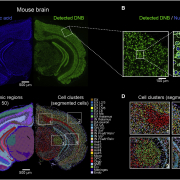Can miRNA be used to detect cancer?
Circulating biomarkers are a tremendously important topic in modern medicine. Such biomarkers can be used in various ways to detect and monitor diseases, such as cancer. The ability to detect cancer early is vital to extending the lives of patients, because when cancer is found in its early stages the success of treatment is greatly improved. One such biomarker that can be used for detecting cancer is microRNA (miRNA), a string of nucleic acids that is secreted by cells into the bloodstream. Once in the blood, these miRNAs can be measured in various ways that allow doctors and researchers to identify if cancer is present in a patient. Many miRNAs are associated with cancer, and using miRNA for detecting cancer can lead to major breakthroughs in early diagnosis of cancer and greatly extend the lifespan of patients.
Introduction to miRNA and its role in cancer
MicroRNAs (miRNAs) are small non-coding RNA molecules that play a critical role in regulating gene expression. They have been shown to be differentially expressed in cancer cells, making them potential biomarkers for cancer diagnosis. In this blog post, we will discuss how miRNAs can be used to detect cancer in patients.
miRNAs are transcribed from DNA and then processed by enzymes to produce mature miRNAs. These mature miRNAs then bind to specific target mRNAs, leading to either repression or degradation of protein synthesis. miRNAs are involved in many physiological processes such as cell differentiation, growth, and development. They also have a major role in human diseases, including cancer, where they can act as oncogenes or tumor suppressors. Dysregulation of miRNA expression is linked to the development and progression of various types of cancer. Due to their important role in human biology, miRNAs are becoming a promising target for diagnosis and therapy of different human diseases.
miRNA as a biomarker for cancer diagnosis
One way miRNAs can be used to detect cancer is by measuring the levels of specific miRNAs in a patient’s blood or tissue samples. Elevated levels of certain miRNAs have been found in various types of cancer, including breast, lung, gastric, and colon cancer. For example, the miR-125b has been found to be elevated in breast cancer patients and the miR-21 found in lung cancer, whereas certain tumor suppressor miRNAs can be under-expressed in cancer cells, such as miR-16-5p. Measuring these miRNAs levels in the blood of a patient can help in early detection of the cancer. Additionally, miRNA profiling, which is the measurement of multiple miRNAs in a patient’s samples, can be used to classify the type of cancer a patient has.
Whether a doctor or researcher uses one, or multiple miRNAs as a cancer signature depends on the underlying biology of the disease. Once a signature is identified, however, it can be used in detecting the cancer early, allowing early diagnosis, early treatment, and far better patient outcomes. It is a hallmark of cancer research that early detection is directly associated with better survival outcomes.
miRNAs are a useful biomarker for many reasons. First, they are actively secreted into the bloodstream so they are easily accessible to measure through simple blood tests. Second, they are very stable molecules that are less likely to degrade than other biomarkers such as proteins or mRNA. Third, they are far more abundant in blood than commonly used DNA biomarkers, so a smaller sample volume is needed for a meaningful result. Fourth, because there are so many biologically relevant miRNAs related to diseases, they offer a wide berth of options in designing useful cancer signatures for detection and monitoring.
miRNA-based diagnostic tests for cancer detection
miRNAs can be used to detect cancer by using miRNA-based detection and diagnostic tests. These tests can detect the presence of specific miRNAs in a patient’s samples, and can be used to diagnose cancer at an early stage, when treatment is most effective. For example, a test based on the detection of 12 miRNAs has been developed by MiRXES to aid in the detection of gastric cancer. Additionally, the detection of miR-155 in the blood of a patient has been shown as a promising marker for the early detection of lung cancer.
These biomarkers are a promising advancement in cancer detection and will likely bring many useful tests to the healthcare market in the coming years. Another facet of such tests include the fact that they can likely be used in combination with other biomarkers and detection assays to improve their sensitivity and specificity.
In conclusion, miRNAs play a critical role in cancer and have been shown to be potential biomarkers for cancer detection and diagnosis. Measuring the levels of specific miRNAs in a patient’s blood or tissue samples, and using miRNA-based diagnostic tests can help in the early detection of cancer, which is crucial for the success of treatment. Research on miRNA-based diagnostic tests is ongoing and we expect to see more tests being developed in the near future to help improve cancer detection and treatment.
Top questions about miRNA
What is miRNA (microRNA)?
miRNA (microRNA) is a small non-coding RNA molecule that plays an important role in regulating gene expression. These molecules are transcribed by RNA polymerase II or III, and then processed by an enzyme called Dicer to produce a mature miRNA. The mature miRNA then binds to a specific mRNA molecule, which results in either the repression of protein translation or the degradation of the target mRNA. In this way, miRNAs act as negative regulators of gene expression, and they play a critical role in a wide range of
How can miRNA be used to detect cancer?
miRNAs have been shown to be differentially expressed in cancer cells and actively secreted into the bloodstream, making them potential biomarkers for cancer diagnosis. One way miRNAs can be used to detect cancer is by measuring the levels of specific miRNAs in a patient’s blood or tissue samples. Elevated levels of certain miRNAs have been found in various types of cancer, including breast, lung, and colon cancer. miRNAs can be used to detect cancer is by using miRNA-based diagnostic tests such as qPCR, which can detect the presence of specific miRNAs in a patient’s samples. These tests can be used to diagnose cancer at an early stage, when treatment is most effective.
Can anyone receive a blood test for cancer detection?
Blood tests for cancer detection can be beneficial for people who have symptoms that may be indicative of cancer, people with a family history of cancer, or people who are at an increased risk for certain types of cancer due to lifestyle or environmental factors. These tests can also be useful for individuals who have already been diagnosed with cancer as a way to monitor treatment effectiveness and check for recurrent disease. Additionally, some blood tests for cancer detection can be used as screening tools for people who are not showing symptoms but are considered to be at an increased risk for certain types of cancer. Overall, blood tests for cancer detection can be beneficial for a wide range of individuals and may help with early detection and treatment of cancer.



